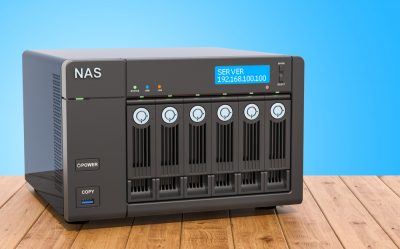Highlights:
- AWS asserts that the service is more user-friendly than the custom software workflows commonly used by companies for similar tasks.
- As per AWS, the business intelligence service, QuickSight, now enables users to transform data into graphs simply by entering natural language instructions through a sidebar.
Amazon Web Services Inc. has officially launched AWS Entity Resolution, a service that aids companies in structuring their data for easier processing and organization.
AWS Entity Resolution premiered at the AWS Summit New York event, where executives showcased exciting enhancements for several existing products. The latest feature additions, like the Entity Resolution service, aim to simplify data management and processing for companies.
AI-powered Entity Resolution
Frequently, companies possess multiple records detailing identical objects. For instance, in the case of an electronics retailer, there could be one document detailing a handset’s features and containing information about its price and availability. These records are frequently stored in separate systems despite addressing the same topic.
Creating links between related records into a unified dataset can offer significant benefits. Working with a single dataset is notably more convenient than dealing with multiple disconnected files, especially when those files are spread across various systems. Consolidating data into one place streamlines operations and enhances efficiency. Furthermore, merging records can lead to potential data storage cost reductions in certain instances. By consolidating data, companies can optimize storage resources and achieve cost efficiencies.
AWS’s general availability of Entity Resolution simplifies connecting related files and streamlining data organization and management. AWS asserts that the service is more user-friendly than the custom software workflows commonly used by companies for similar tasks.
AWS offers a visual interface for users to interact with Entity Resolution. According to AWS, creating a software workflow to find and link related records is as simple as a few clicks. Users can manually configure record-linking workflows or opt for a preconfigured AI model from AWS to automate the process.
Dilip Kumar, Vice President of AWS Applications, states, “Today, information about customers, products, or businesses is often fragmented and stored across organizations. With a few clicks, AWS Entity Resolution makes it easy for organizations to match records and link workflows that are flexible, scalable, and easily connect to existing applications.”
Simplified AI Data Management
Amazon OpenSearch Serverless was another focal point at the recent AWS Summit.
Introduced in January, Amazon OpenSearch Serverless is a managed search engine and analytics service the cloud giant offers. Currently in preview, the service has been enhanced with a vector engine, simplifying the process of building AI applications for companies.
AI models do not store the ingested text, images, and other files in their original format. Instead, they convert this data into embeddings, which are used for processing and analysis. Indeed, embeddings are specialized mathematical structures that neural networks find easier to process than other data types.
As per AWS, customers can utilize the new vector engine in OpenSearch Serverless to store their AI models’ embeddings. The engine is designed to handle the storage of up to billions of embeddings, providing a scalable and efficient solution for managing vast amounts of data. Underlying its functionality, the vector engine stores AWS’ Amazon S3 object store data and automatically adjusts infrastructure capacity based on changing application needs.
In a blog post, AWS Product Management Executives Pavani Baddepudi and Carl Meadows stated, “The vector engine automatically adjusts resources by adapting to changing workload patterns and demand to provide consistently fast performance and scale. As the number of vectors grows from a few thousand during prototyping to hundreds of millions and beyond in production, the vector engine will scale seamlessly.”
In addition to storing AI models’ information, the vector engine offers a similarity search capability. This feature enables a neural network to upload a file and locate similar records already stored in the engine. Typically, accomplishing this task demands the use of intricate third-party software tools by companies.
Typically, accomplishing this task demands the use of intricate third-party software tools by companies. One way recommendation engines operate is by analyzing a user’s purchase history and presenting them with comparable items or merchandise. AI-powered cybersecurity tools identify breaches by cross-referencing system access requests with established patterns of malicious activities.
Generative AI Enhancements
In addition to introducing OpenSearch Serverless, AWS has recently released updates for two other services: AWS Glue and Amazon QuickSight. The services are upgraded with generative AI features that automate repetitive tasks to enhance users’ day-to-day work.
Glue is a data integration service that transforms business records into a more analyzable format. Engineers utilize Glue by crafting scripts or notebooks to specify how data should be prepared for analysis. Thanks to the recent integration of Amazon CodeWhisperer, AWS’ generative AI coding assistant, engineers can use natural language commands to create scripts.
Amazon QuickSight is also being upgraded with new generative AI enhancements. As per AWS, the business intelligence service, QuickSight, now enables users to transform data into graphs simply by entering natural language instructions through a sidebar.
Similarly, analytics teams can utilize text prompts to personalize graphs and perform calculations on their data in QuickSight.

























































